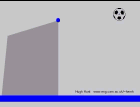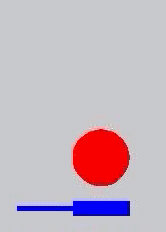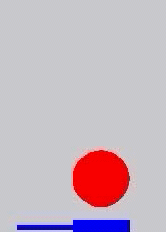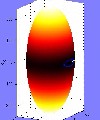Eye Safety - do not look at the sun directly
The simplest and safest method to produce a clear image of the Transit is to use a 'reflected pinhole' which is just a small mirror, as shown here,
blacked out with tape leaving a small square, say 5mm x 5mm (1/4" x 1/4")
(the smaller the square the sharper the image, but it will be less bright). If you reflect the sunlight through the window onto the wall of a darkened room then you get a
perfect circle which is the disc of the sun. The mirror needs to be about 30 metres (30 yards) away from the wall to get a sharp image. You should use a smaller
square (pinhole) if you want a shorter distance. Use some putty or plasticene to fix the mirror to a table, chair, wall or post - the mirror needs to be held still to
prevent the image from wobbling.
The method has many advantages:
cheap - all you need is any old (bit of) mirror and some tape.
safe - observations are made in a darkened room, away from the sun (no sunburn!)
perfect for mass viewing - many people can stand around and admire!
easy to explain - no complex optics
perfect for all solar observation (transits, sunspots and eclipses)
really fun, safe and easy for children
Now all you have to hope for is a sunny day ...
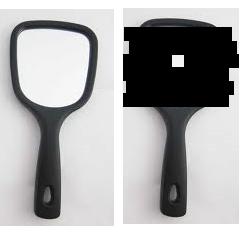
A mirror, taped over to leave a 5mm x 5mm square
|
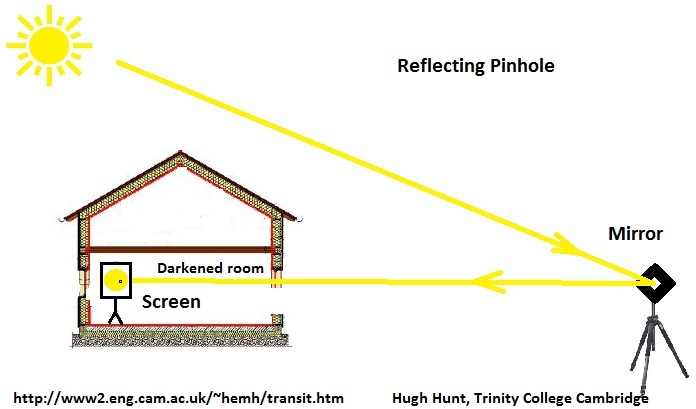
Image reflected into darkened room
| |
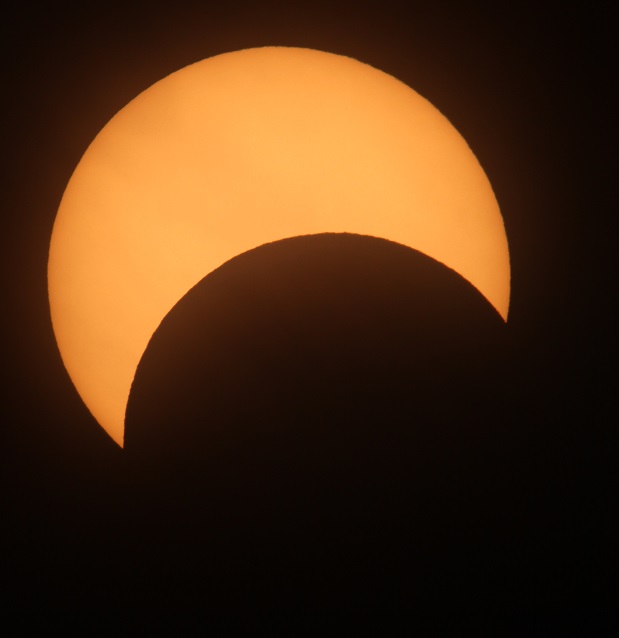

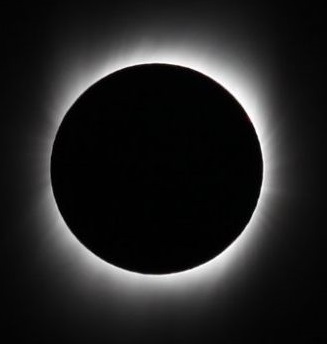











 The “pinhole” is actually a small piece of mirror about 5mm square, 30m away from
the screen
The “pinhole” is actually a small piece of mirror about 5mm square, 30m away from
the screen


 The "reflected pinhole" images here were produced
using a novel design of pinhole camera, devised by Dr Hugh Hunt. The drawback
of conventional pinhole cameras is that the size of pinhole required to
generate a sharp image is so small that diffraction effects destroy the clarity
of the image. It is also difficult to project the image onto a screen outdoors where there is bright sunlight.
The method employed here is to use a piece of mirror to reflect an image of the sun through the window of a darkened
room. A "pinhole"
was created by blanking out with plastic tape all but a 5mm square portion of a
mirror. If you want a sharp image then the square should be small, but the image will then be less bright - so there is a trade-off. The 5mm (1/4") square works OK when
the mirror is about 30 metres (30 yards) away from the screen (any wall will do).
The mirror has to be held quite still. We used a retort stand from a chemistry lab here, but the mirror can be held in place using putty or plasticene.
The system was motivated by a similar
'reflected pinhole' concept used previously to observe the 1999 solar eclipse, when any
passer by with a mirror in their handbag was encouraged to reflect an image of
the solar disk onto the wall of Great Gate. The resolution of such a projected
image is limited by the size of the mirror. For instance, a 4cm square mirror
will produce an image which is blurred to the order of 4cm. To decide if this
is good enough, consider that the sun subtends an angle of roughly 0.5 degrees
so that when projected through a pinhole to a screen at a distance of 10m the
image of the solar disc will be around 10cm in diameter [subtended angle in
radians x distance].
The resolution of
4cm was then OK to see the eclipse since the disc of the moon was large in
relation to the disc of the sun (the same size, in fact). Since Venus is so much smaller than the moon
(about 1/32 the size as viewed during the transit), a very much smaller mirror
is required to give a clear image. But
a small mirror means less light - hence the need for a darkened room. Also, to improve resolution the projected
distance was increased to 30m giving a projected solar disc diameter of around 30cm.
The "reflected pinhole" images here were produced
using a novel design of pinhole camera, devised by Dr Hugh Hunt. The drawback
of conventional pinhole cameras is that the size of pinhole required to
generate a sharp image is so small that diffraction effects destroy the clarity
of the image. It is also difficult to project the image onto a screen outdoors where there is bright sunlight.
The method employed here is to use a piece of mirror to reflect an image of the sun through the window of a darkened
room. A "pinhole"
was created by blanking out with plastic tape all but a 5mm square portion of a
mirror. If you want a sharp image then the square should be small, but the image will then be less bright - so there is a trade-off. The 5mm (1/4") square works OK when
the mirror is about 30 metres (30 yards) away from the screen (any wall will do).
The mirror has to be held quite still. We used a retort stand from a chemistry lab here, but the mirror can be held in place using putty or plasticene.
The system was motivated by a similar
'reflected pinhole' concept used previously to observe the 1999 solar eclipse, when any
passer by with a mirror in their handbag was encouraged to reflect an image of
the solar disk onto the wall of Great Gate. The resolution of such a projected
image is limited by the size of the mirror. For instance, a 4cm square mirror
will produce an image which is blurred to the order of 4cm. To decide if this
is good enough, consider that the sun subtends an angle of roughly 0.5 degrees
so that when projected through a pinhole to a screen at a distance of 10m the
image of the solar disc will be around 10cm in diameter [subtended angle in
radians x distance].
The resolution of
4cm was then OK to see the eclipse since the disc of the moon was large in
relation to the disc of the sun (the same size, in fact). Since Venus is so much smaller than the moon
(about 1/32 the size as viewed during the transit), a very much smaller mirror
is required to give a clear image. But
a small mirror means less light - hence the need for a darkened room. Also, to improve resolution the projected
distance was increased to 30m giving a projected solar disc diameter of around 30cm.
 Various
people assembled viewing the pinhole image
The darkened room used for this purpose
was the Old College Office Meeting Room. A dark cloth was used to blackout the
window where the reflected image enters.
There are some more photos of this setup at
http://dcford.org.uk/work/transit.html
Various
people assembled viewing the pinhole image
The darkened room used for this purpose
was the Old College Office Meeting Room. A dark cloth was used to blackout the
window where the reflected image enters.
There are some more photos of this setup at
http://dcford.org.uk/work/transit.html


 images taken as Venus is about to leave the solar disc
images taken as Venus is about to leave the solar disc



 images
taken about 90 minutes after the start of the Transit
images
taken about 90 minutes after the start of the Transit









 Sir
Martin Rees,Master of Trinity and Astronomer Royal
Sir
Martin Rees,Master of Trinity and Astronomer Royal

 Hugh Hunt
Hugh Hunt
 Richard
Serjeantson and his 90mm Meade
Richard
Serjeantson and his 90mm Meade

 Early
morning observers – around 7am
Early
morning observers – around 7am

